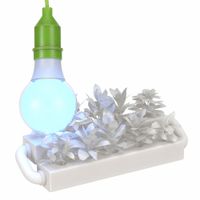- Home
- Lighting
- Lighting Fixtures Retrofit Kits
- Grow Lights For Indoor Plants
- Led Grow Light Bulbs
LED Grow Light Bulbs
These LED bulbs install into grow light fixtures and provide light for plant growth. LEDs use less energy than other lighting technologies and run cool so lights can be placed within inches of plants without causing wilt or burn. Standard bulbs have a screw-in base to fit sockets on clamp-on and str .....Read More
Frequently Asked Questions
What are the benefits of using LED grow lights for plants?
How do LED grow lights compare to traditional grow lights in terms of energy efficiency?
Can LED grow lights be used for all stages of plant growth?
What is the ideal distance to place LED grow lights from plants?
How long should LED grow lights be left on each day for optimal plant growth?
Are LED grow lights safe to use in high humidity environments?
What color spectrums do LED grow lights emit for different plant growth stages?
